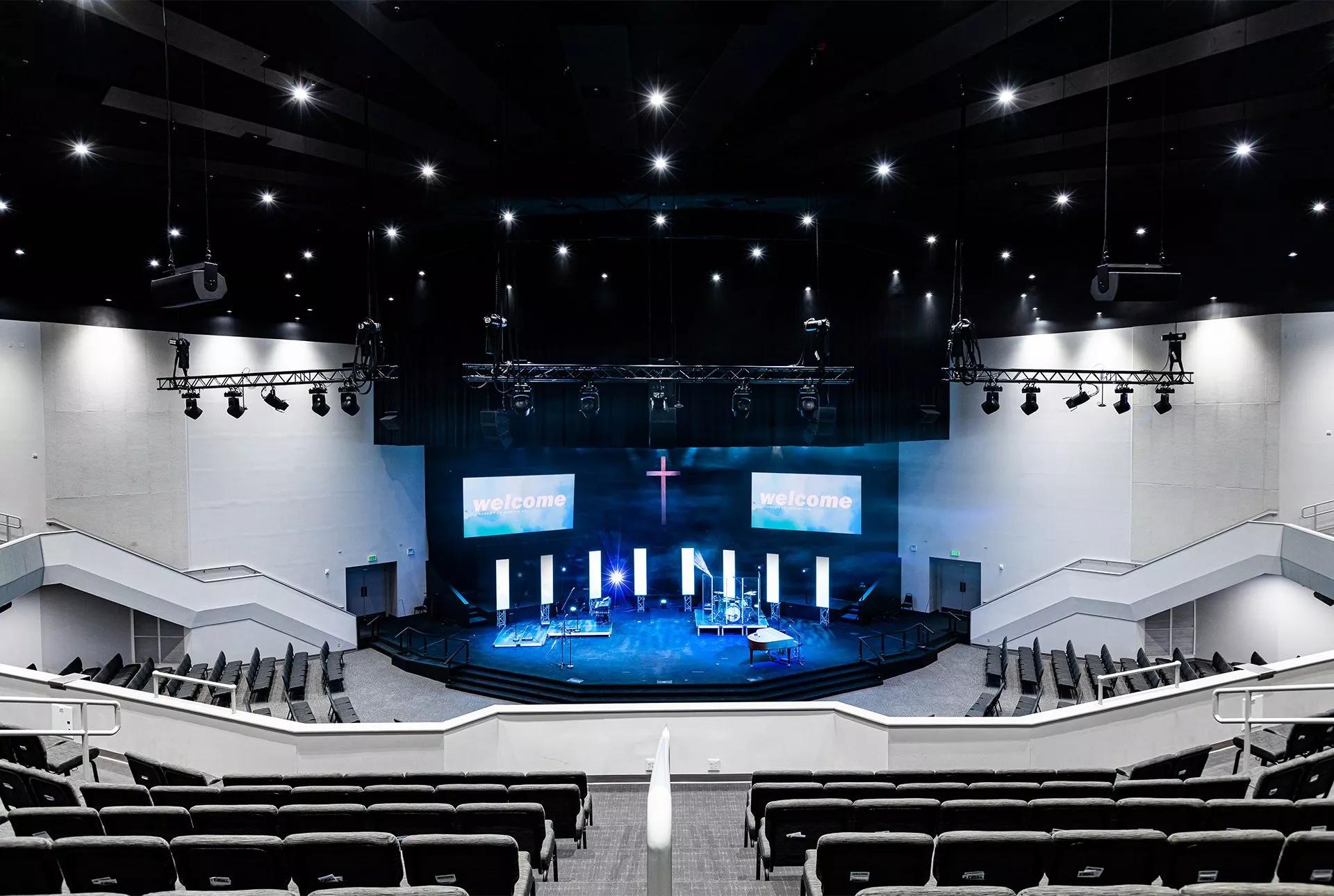Prior to the Covid pandemic, live streaming of church services was largely a novelty. Since then, online services have become a mainstream manner of worship, with 45% of surveyed Americans having attended a Christian church service online during the pandemic.
Thus, it’s become important for churches to make the streamed experience as approximate to the in-person one as possible. That requires some audiovisual savvy, plus these live streaming tips and tricks, and you’ll achieve the ideal experience — and sound.
Separate the Online Signal
Ideally, church live streaming will be discrete and mixed specifically for its online application. That’s because what works in the church doesn’t necessarily translate seamlessly to a stream. Sanctuaries have acoustical “signatures” — such as the timbre of their reverb — that create an emotional connection between the pastor, choir and band, and audience. These signatures are critical to capture and convey online.
However, it’s a different worship environment online. The online audio mix should consist of all the same elements heard in-person — the sermon, announcements, and live music — but find a balance right for the platform. That’s best achieved by using a “splitter” to create a second parallel pathway of audio signals from the front-of-house mix console and send those elements directly to a separate console operated by someone who focuses solely on the streaming mix.

Inspiration certainly plays a key role in delivering a great sermon, but without the right audio-visual equipment and techniques, some magic may get lost in transmission.
Capture and Manage the Acoustic Signal
Ideally, you want to capture a certain level of the space’s acoustical signature to enhance the in-person sensation. To incorporate some of that, set up a stereo pair of microphones on stands near the house mix position. The output of those microphones, aided by a touch of compression, can be blended into the discrete streamed mix, giving listeners a sense of being there. Alternately, a touch of reverb in the streaming mix itself can also provide a similar ambience.
Getting the house sound into the online stream also means raising the quality of in-house sound as high as possible. That means the installed sound system needs to be able to tame that acoustic signature by keeping the sound from bouncing off reflective surfaces and inhibiting speech intelligibility.
Bose Professional’s DeltaQ technology offers an excellent solution for this. The loudspeaker array can precisely direct sound to audience areas for the best possible sound quality and vocal clarity. A clear, clean stereo room sound mixed in with the discrete audio from the house splitter assures a “you-are-there” experience for the remote worship participant.
Enhance the Mix with Headphones
Ideally, the person mixing the streamed audio can work from a separate and acoustically isolated mix or front-of-house position to hear and mix each element clearly. However, that’s not always feasible; sometimes the streamed mix needs to be done in the same space. In that case, the use of quality headphones can provide a cost-effective benefit, as the acoustic isolation allows you to build a streaming mix independent of the live space.
Headphones — wired or wireless — can provide a high degree of isolation for the mixing technician. Plus, through Bluetooth technology, the mixing technician can work from a wireless platform, such as an iPad, allowing checks of the sound and balance from multiple locations in the church.
Inspiration certainly plays a key role in delivering a great sermon, but without the right audio-visual equipment and techniques, some magic may get lost in translation. Getting the signal to cooperate through a great sound system, careful mixing and broadcasting, and meticulous refinement will go a long way in ensuring great church live streaming.
